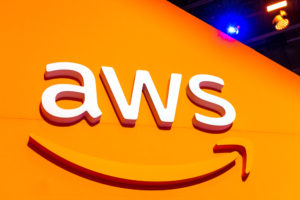
AWS Moves Up the Application Stack

(Michael Vi/Shutterstock)
Amazon Web Services is no stranger to business applications. After all, it has been running them on its infrastructure service since its founding in 2006, and the AWS Marketplace is full of applications from partners. But lately, the cloud giant has been moving into applications business by itself.
A lot of that application business stems out of its work in the healthcare field, says Pat Combes, the head of technology for healthcare and life sciences for AWS, who recently added the top technology position for solutions (“capital ‘S’ solutions,” he says) as well.
“We’re building them more as products now instead of casual suggestions for how you should deploy workloads,” Combes said at AWS’s recent re:Invent confab in Las Vegas.
AWS currently offers more than 150 industry specific solutions spread across a host of industries, from stalwarts like financial services, healthcare, and retail to sports, gaming, and media entertainment.
“Solutions for us are always a composite construct of more than one service that’s pulled together in service of a common use case,” Combes says. “So these are more like things that any customer can deploy readily without having to go through a lot of extensive research or configuration to try to get started.”
There’s no shortage of examples of other tech firms partnering with AWS. Snowflake, Teradata, IBM, Databricks–they offer softwawre on AWS, by necessity, since AWS has the largest base of public cloud customers (estimated to be 1 million organizations) in the world.
Some of these solutions are based on applications developed by third-party companies. For instance, AWS recently went into business with Duke Energy, one of the country’s largest electricity suppliers, on a smart grid solution that will leverage Duke’s Hadoop-based data lake solution for balancing supply and demand in potential shortfalls in electricity generation. The solution will be adapted to run on AWS’s cloud, and offered to other grid operators.
AWS is also developing industry-specific solutions by itself, without the help of partners. For example, the company recently rolled out AWS Supply Chain, which brings machine learning and AI to bear on the challenge of moving specific baskets of goods thousands of miles across the globe to land in distribution centers or stores. That solution, which leverages data originating in ERP, supply chain execution, and warehouse management systems, was built entirely in-house, leveraging the extensive logistics learnings of the Amazon.com ecommerce operation.
Another inhouse-developed solution, Amazon Connect, which is a call center and intelligent agent solution created in the image of Amazon.com’s own massive call-center operations, also factors into the AWS solution equation.
Deployments of Amazon Connect increased significantly during COVID-19 as companies operating traditional call centers realized they could no longer safely congregate hundreds or thousands of employees into buildings to take customer calls. The fact that the virtually deployed Connect can also use the latest deep learning-based natural language processing (NLP) technology to develop intelligent conversational agents that can do some of the work of human agents was a bonus.
But AWS’s big move into industry-specific solutions actually came from a different angle. “A lot of it actually evolved from the deployment of AWS for Health,” Combes says.
Amazon for Health is a collection of curated solutions developed both internally and in concert with partners to support technology demands of companies in the healthcare and life sciences space. The company works with a range of application developers, such as Cerner and Epic, to offer their solutions. It also enables its various analytics and machine learning offerings to work against data generated using partner applications.
While AWS will be able to leverage internally developed solutions for some areas, that won’t work in industries like healthcare and life sciences, Combes says. “We still go to market primarily with our partners and scale with our partners,” he says. “The only way to really tackle an industry…is to deeply engage with partners. Our partners are very essential to the way AWS operates.”
AWS Supply Chain and Amazon Connect are cross-industry solutions, which are more amenable to AWS going it alone, Combes says.
“Supply chain is one of those things we consider cross-industry. There’s almost nobody without a supply chain of some sort,” he says. “What we try to do with a lot of this is work backwards from our customer challenges, but also apply what we really know well, Amazon’s capabilities, just as [we have done] with Connect.”
Related Items:
Inside AWS’s New Supply Chain Planning Offering
AWS Introduces Amazon Security Lake and AWS Clean Rooms
































